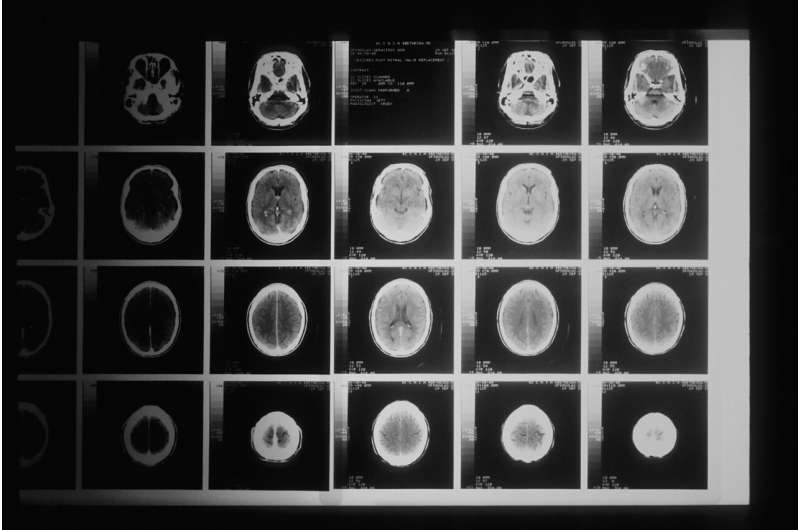Biomarkers found that could be drug targets against a deadly form of brain cancer


Biomarkers that could be targets for novel drugs to treat glioblastoma brain tumors have been identified by investigators at Georgetown Lombardi Comprehensive Cancer Center, providing hope for a cancer that is highly lethal.
Currently, the drug most often used to treat glioblastoma, temozolomide, is uniquely able to cross the blood/brain barrier to attack the tumor but resistance develops rapidly, and many patients do not survive for more than a year after diagnosis. This new finding provides early evidence that there may be a benefit in targeting specific alterations in cancer cells with newer agents once a patient’s tumor becomes resistant to temozolomide.
The finding appeared June 22, 2022, in Science Advances.
“As a field, we have struggled to deal with the short-term effectiveness of temozolomide, as many of the drugs used successfully in other cancers are disappointing when they are subsequently tested in glioblastoma clinical trials. One way to deal with this problem is to learn enough about how we can target features that help drug-resistant glioblastoma survive,” says Rebecca B. Riggins, Ph.D., Associate Professor and Associate Director of Education and Training at Georgetown Lombardi and co-corresponding author of the study. “We focused on the details of how temozolomide damages DNA to help radiation treatments work better. Our team found that temozolomide-resistant glioblastoma relies on a protein called CLK2, and that inhibiting the activity of CLK2 could cause widespread confusion, leading to cancer cell death.”
The targets the researchers identified were alterations in a key structural component of both DNA and RNA, specifically in guanine, one of the four bases that comprise DNA. Modifications to guanine can ultimately have an impact on CLK2, which has been implicated in the aggressiveness of the tumor. Beyond identifying vulnerable modifications, the researchers were able to identify drugs that help stabilize RNA and could potentially slow or stop the resistance that typically develops to temozolomide.
Only about 5% of patients diagnosed with glioblastoma live for five years after diagnosis and median survival is a little over a year; survival rates haven’t changed much since the mid-1970s. Temozolomide (Temodar) has been the standard of care since 2005 in combination with surgery and radiation.
Temozolomide’s targeting of guanine also impacts structures that regulate key cancer-causing genes. If these cancer-causing genes, called oncogenes, could be kept turned off, the drug might have a longer period of activity. Some of this knowledge was gleaned from studies in a neurogenerative disease, Amyotrophic Lateral Sclerosis (ALS), commonly known as Lou Gehrig’s disease. ALS has some features that are similar to glioblastoma, therefore they might also inform new strategies for glioblastoma treatment, the researchers theorized.
“Some of the mechanisms underlying neurodegenerative diseases appear to be relevant to temozolomide resistance in glioblastoma,” says Deanna M. Tiek, Ph.D., a F99/K00 fellow at the Northwestern University Feinberg School of Medicine and The Robert H. Lurie Comprehensive Cancer Center and co-corresponding author. Tiek was a Ph.D. student in Riggins’ lab when this research began. “This work demonstrates that inspiration and insight can come from places we might not have considered, and that it’s so important to take a risk, do the experiment, and see if you were right or not.”
Source: Read Full Article